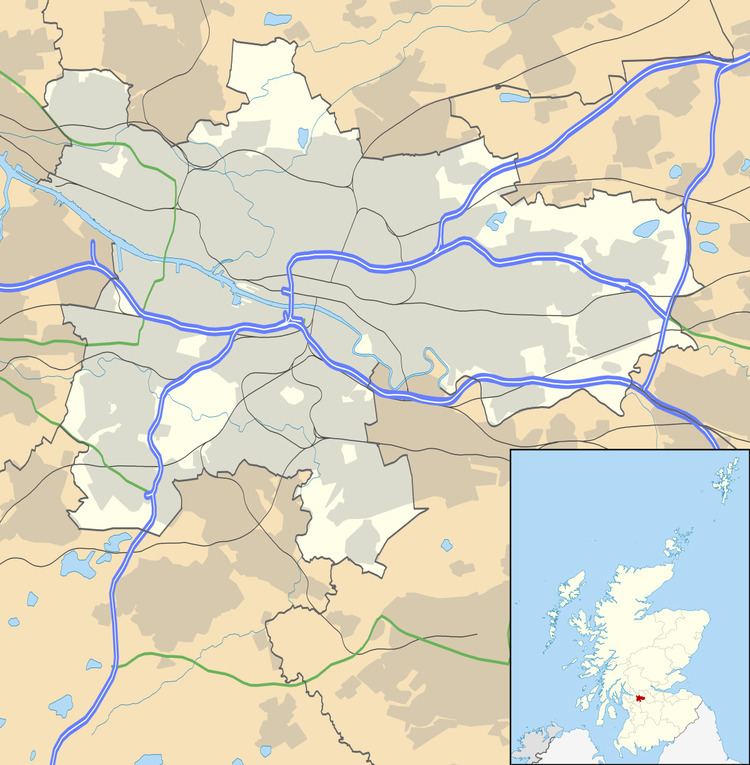OS grid reference NS583656 Sovereign state United Kingdom Postcode district G2 Dialling code 0141 | Post town GLASGOW | |
 | ||
Blythswood Hill is an area of Glasgow, Scotland.
It lies on the western flank of the city centre and as the name suggests rises to a plateau before dipping again towards the west end area of Park Circus and of Woodlands.To its north is Garnet Hill. The estate of Blythswood centres upon the area from Sauchiehall Street and Bath Street southwards to Bothwell Street, and below, and from West Nile Street to Elmbank Street and beyond. The first street to be opened up was Bath Street in 1800, by William Harley. After the Reformation the Lands of Blythswood were owned by Sir George Elphinstone and changed to the Douglas-Campbell family during the 17th century. Archibald Campbell, whose son became Lord Blythswood set about feuing the lands to developers.
Blythswood was developed as a result of the westward expansion of the city in the late 18th and early 19th centuries. Likened to Edinburgh's New Town, it housed the city's wealthy merchants and shipping magnates in Georgian townhouses. The area is on a grid-iron street plan which started first around George Square in the 1780s and was adopted by Glasgow Town Council for urban developments westwards, and south of the Clyde. The grid-iron system was later adopted by New York and other cities in America.
Blythswood became infamous as the home of Madeleine Smith, a young woman - a daughter of leading architect James Smith - who in 1857 was tried for the murder by arsenic poisoning of her lover Pierre Emile L'Angelier. Although the verdict was not proven the story scandalised Scottish society, and is recounted in Jack House's 1961 book Square Mile of Murder.
Today, residential use is returning to Blythswood Hill, while it is mainly offices and forming, along with neighbouring Anderston, Glasgow's financial and commercial district. The conversion of the former Royal Scottish Automobile Club building by the Town House Company Ltd (8-13 Blythswood Square) to form the 5 Star Blythswood Square Hotel [1] is considered to be a catalyst to the enhancement and improvement of the whole Blythswood Square.
